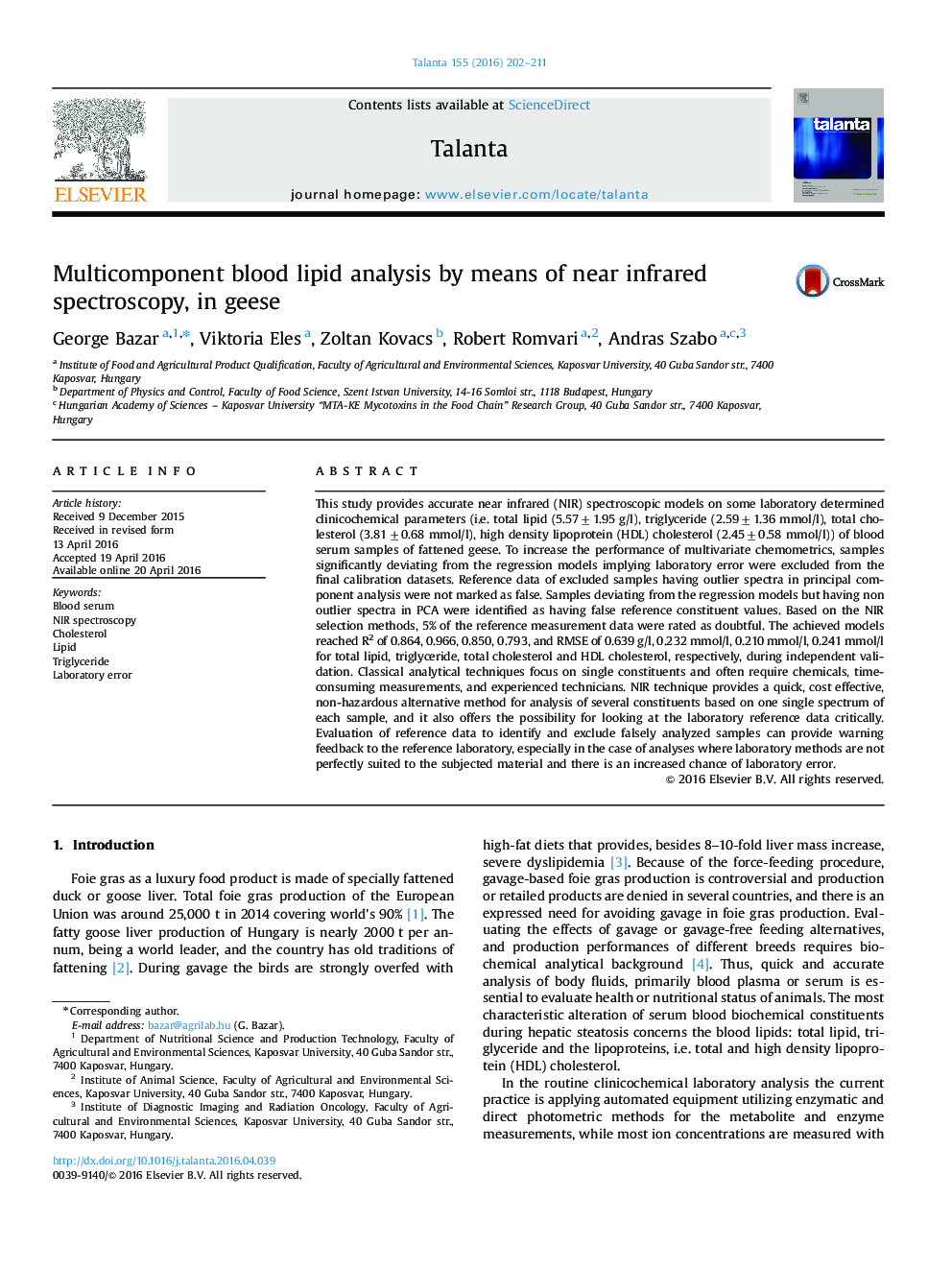| Article ID | Journal | Published Year | Pages | File Type |
|---|---|---|---|---|
| 1242431 | Talanta | 2016 | 10 Pages |
•Accurate NIR models were fitted on some lab-determined clinicochemical parameters.•Spectral outliers were identified using principal component analysis.•Non-fitting samples of the regression models were considered to have false lab data.•NIR technique offers the possibility for looking at the reference data critically.•Evaluation of reference data can provide warning feedback to the reference laboratory.
This study provides accurate near infrared (NIR) spectroscopic models on some laboratory determined clinicochemical parameters (i.e. total lipid (5.57±1.95 g/l), triglyceride (2.59±1.36 mmol/l), total cholesterol (3.81±0.68 mmol/l), high density lipoprotein (HDL) cholesterol (2.45±0.58 mmol/l)) of blood serum samples of fattened geese. To increase the performance of multivariate chemometrics, samples significantly deviating from the regression models implying laboratory error were excluded from the final calibration datasets. Reference data of excluded samples having outlier spectra in principal component analysis were not marked as false. Samples deviating from the regression models but having non outlier spectra in PCA were identified as having false reference constituent values. Based on the NIR selection methods, 5% of the reference measurement data were rated as doubtful. The achieved models reached R2 of 0.864, 0.966, 0.850, 0.793, and RMSE of 0.639 g/l, 0.232 mmol/l, 0.210 mmol/l, 0.241 mmol/l for total lipid, triglyceride, total cholesterol and HDL cholesterol, respectively, during independent validation. Classical analytical techniques focus on single constituents and often require chemicals, time-consuming measurements, and experienced technicians. NIR technique provides a quick, cost effective, non-hazardous alternative method for analysis of several constituents based on one single spectrum of each sample, and it also offers the possibility for looking at the laboratory reference data critically. Evaluation of reference data to identify and exclude falsely analyzed samples can provide warning feedback to the reference laboratory, especially in the case of analyses where laboratory methods are not perfectly suited to the subjected material and there is an increased chance of laboratory error.
Graphical abstractFigure optionsDownload full-size imageDownload as PowerPoint slide
